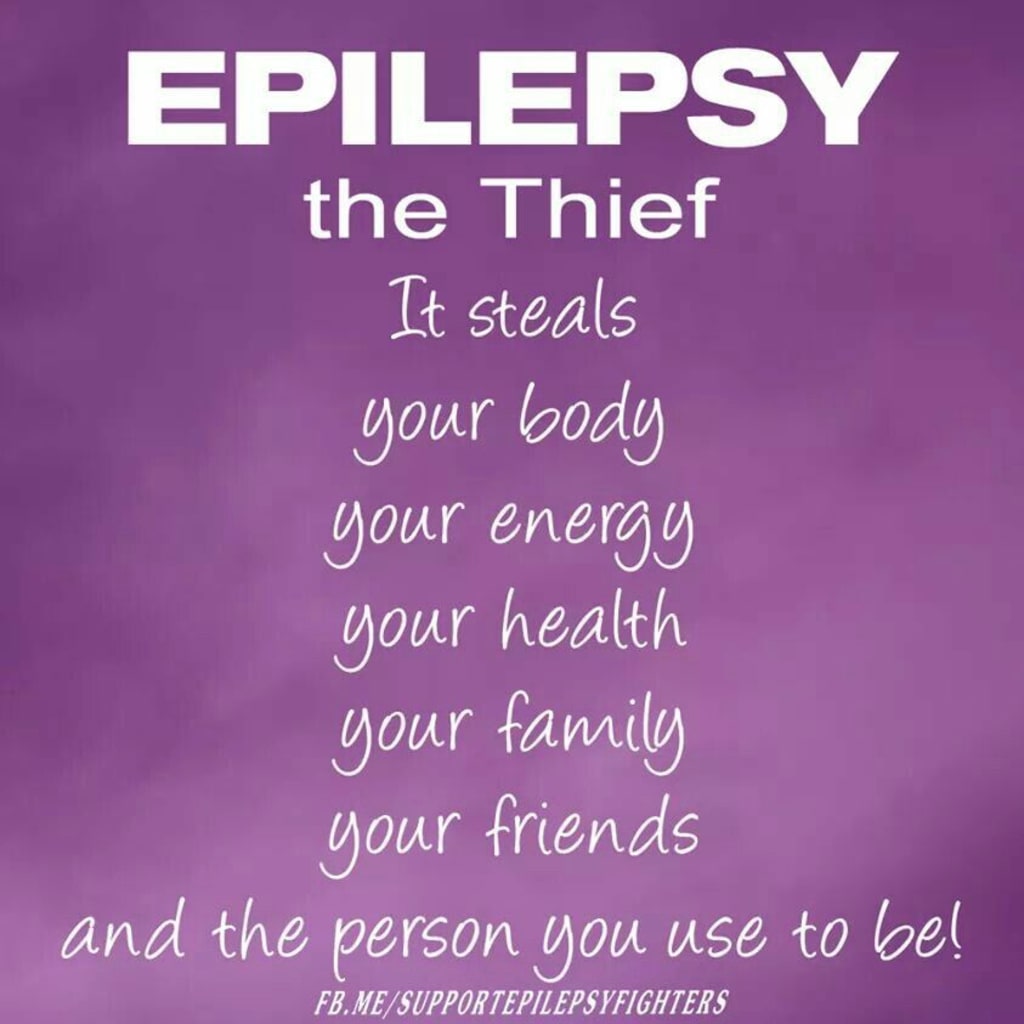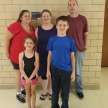Alternative Therapies for Epilepsy Patients
My celebration of purple day 💜

March 26th is purple day. I don't know exactly what it entails but in the epilepsy community, we use it as an additional excuse to spread awareness since it's hard to get people to care unless there is a day or a month dedicated to something. With epilepsy affecting 1 in 26 people, myself included, I have dedicated my life to learning and raising awareness. After a brief conversation in one of Dharrsheena's comments sections, I realized I don't think I have done a piece on alternative therapies so I decided at that time it is perfect for purple day for this year.
It is well-known that epilepsy patients have to take medication. However, if you have tried at least three medications without success, you are medication resistant (such as me... I tried six without success in seizure freedom). If you have been told you're medication resistant, there are other options.
VNS Therapy
The vagus nerve stimulator (VNS) is something I have quite a bit of knowledge about, since I had one put in on September 3rd, 2019. It is a generator with a battery implanted on the left side of the chest. It is connected to the brain via the vagus nerve, which is located near the vocal cords. It "fires" signals however frequently the person's doctor has it set (every 1.1 minutes for me) to override abnormal brain activity.
The scar is where the wire around the vagus nerve is placed.

It is almost like a medicine, given it having regularity and it has something similar to an emergency medicine... A very strong magnet. It is so strong that it has been proven to ruin phones and credit cards for people. I was warned of that so I'm extra careful.
The way the magnet works is actually pretty simple... It gets swiped across where the generator is (from the collarbone to the armpit) for less than 2 seconds. The generator then sends a stronger signal to override the abnormal brain activity, leading to a shorter seizure.
Another thing I found the VNS helpful with is my recovery time. I used to sleep for about 1 hour before waking up to get in bed and go back to sleep. Now, I'm awake after 15-20 minutes and don't always fall back asleep right away. There was one day that I had a seizure at work and after I woke up, I finished my shift because of the VNS and the support my coworkers and bosses give me.
RNS Therapy
I know a little about the responsive neurostimulator (RNS) due to a friend of mine having one. In a way, it is similar to the VNS. It is also a generator that is implanted inside a person. However, this generator is put directly on the brain. They remove a part of the skull, wherever the focal (partial) seizures are coming from, and place the generator there instead. Rather than having a magnet to swipe and sending signals, the RNS tracks your brain activity so the doctor can see how many seizures you are having per day. Usually, with focal seizures, you have many per day, if you are medication resistant.
DBS Therapy
This one will be short, as I don't know a lot about deep brain stimulation (DBS). I do know that they put electrodes inside your brain, wherever the seizures are coming from. The electrodes, like a VNS, send signals during a seizure. Outside of that information, I don't really know anything else, besides it being a long process for consideration due to risks of the surgery.
Dietary Therapy
There are a couple different diets that are used in patients with epilepsy. The two pretty common ones are the ketogenic diet (mainly in children) and the modified Atkins diet (MAD, common in adults). They are very similar... Low carb, high fat, and moderate protein. The main difference between keto and the MAD is the ratios but they're so similar that many people on the MAD refer to it as keto.
I am allowed up to 20 grams of net carbs (total-fiber-sugar alcohols=net carbs) on the MAD per day. Before the diet, I would eat 3 times that in a meal. The good news for people doing keto/MAD is that because keto became a fad diet, there are keto alternatives for just about everything. There's more good news... I can have unlimited bacon and still manage to lose weight!
The main thing that sucks is that there are more appointments. My neurologist and I work with a dietician. I have blood work every 3 months because there are specific things that they worry about more than others.
The way the diet works is that your brain doesn't have glucose to use for energy so ketones (fats) are used for energy. Without glucose, the brain cells (neurons) are slowed down and less likely to go into a seizure.
Surgery
This is a last resort and only an option for a relatively small percentage of patients with focal seizures. Doctors often don't do it for a few reasons...
1. Most of the brain is extremely important, so imagine losing vital parts.
2. It is EXTREMELY risky because if you screw up a brain surgery, you could ruin a person's personality/life or worse, kill them.
The surgery is a brain surgeon removing where the seizures start. If where the seizures start is gone, their seizures usually go away. However, there is a chance of them just beginning elsewhere in the brain.
About the Creator
Rene Peters
I write what I know, usually in the form of poetry. I tend to lean towards mental health, epilepsy, and loss/grieving.






Comments (7)
Thank you for sharing , I will share this with a friend who is being observe for seizures
Oh my. Those are some pretty invasive treatment. I had no idea any of those exist. Great article. Thanks for sharing.
Gained a lot of information from your article!!! Thank you for sharing!!!❤️❤️💕
This post struck home for me in unfortunate ways, but I so appreciate your experiences shared & knowledge gained! VNS is very interesting (besides the pain) as I’ve tried out ‘natural’ vagus nerve stimulants at home to help with C-PTSD. This unlocked huge childhood trauma memories I blocked in, and so it makes me curious to wonder if VNS would be helpful for the bipolar disorder I live with You can read more about my drug aversion here (although I just started lithium last week with success in progress): https://vocal.media/psyche/pharmaceutical-and-supplement-journey Looking forward to hearing more about your journey! This has prompted my looking into epilepsy more - cheers
Omgggg as if VNS wasn't scary enough, they have scarier ones like the RNS and DBS! Gosh, I never knew anything about whatever you've said here and it was such an eye opener to me! I'm so grateful you wrote this!
Wow, this is so full of information, and I definitely learned some new things about epilepsy. Thank you so much for publishing this.
Really informative Rene. I am sure many will find it extremely helpful 🤍